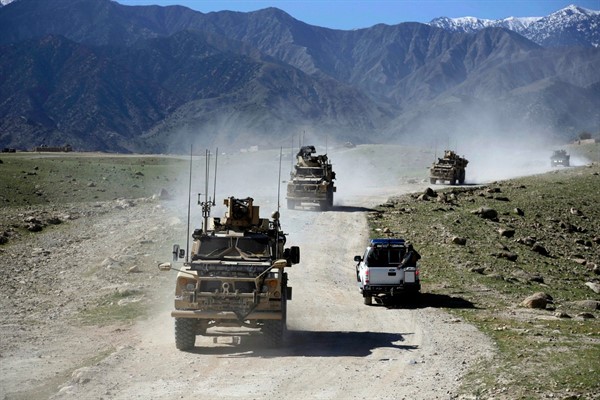With public pressure growing on the Trump administration to take action in response to the reported Russian scheme to pay bounties to Taliban-linked militants to kill American troops in Afghanistan, a natural question to ask is, “What is to be done?” Much of the congressional attention for now will inevitably focus on who in the White House knew what and when about intelligence on the Russian plot. But the reality is that Washington has a limited range of policy options to manage an escalation of tensions with Moscow, and this Congress isn’t likely to do much months before an election.
Congress this week held the first of what is likely to be many hearings in the coming months on the credibility of the intelligence and reporting that Russia’s military intelligence agency, the GRU, apparently paid upward of $100,000 to fighters tied to the Taliban to target American and coalition soldiers. While the intelligence on the existence of a bounty program appears to be well founded, there are reasons to be skeptical of any causal claims linking Russian payments to American casualties in Afghanistan. As Gen. Frank McKenzie, the head of U.S. Central Command and military operations in South Asia and the Middle East, pointed out in an interview this week, intelligence always comes with caveats and uncertainties that make it difficult to connect one action to another event.
One of the least credible claims to surface so far, for instance, is that the Russian-Taliban bounty program is a direct response to the U.S. airstrike in Syria in February 2018 that killed an estimated 200 Russian paramilitaries from the Wagner Group, the opaque private military contractor backed by the Kremlin. That deadly strike in Deir Ezzor, in eastern Syria, instead appeared to be the residual outcome of multiple unhappy accidents and near misses between American and Russian troops at the height of the campaign against the Islamic State. Russian and American efforts to “deconflict” military operations in Syria began with the joint monitoring of air operations in late 2015, and most famously reached their peak with the establishment of a joint cell for monitoring the movement of ground forces in 2017. While the Russian appetite for vengeance cannot be discounted, the fact that deconfliction was required at all underscores how foggy the battlefield in Syria was.

